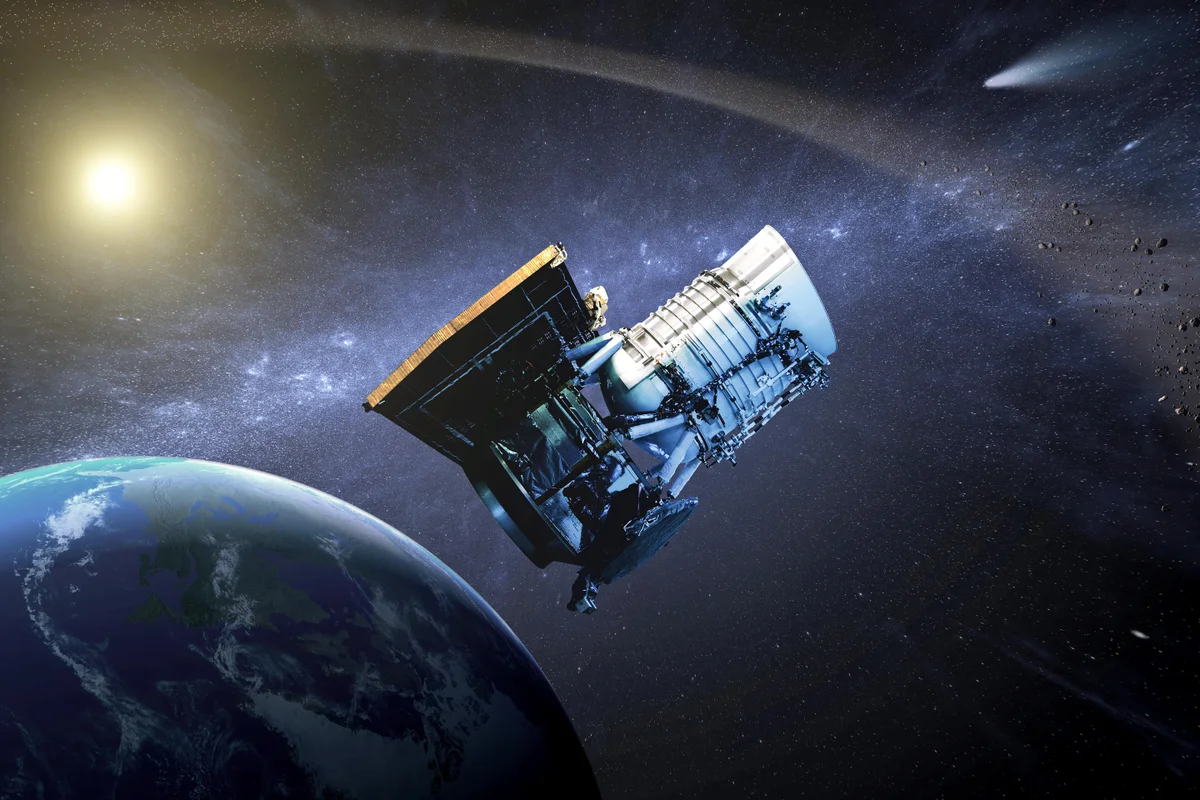La NASA está retirando su único telescopio espacial dedicado a la caza de asteroides, poniendo fin a una misión de 10 años que inicialmente comenzó como algo completamente diferente: un explorador astrofísico destinado a abrir los ojos de los científicos al universo infrarrojo. El telescopio NEOWISE de la NASA ha buscado asteroides, enanas marrones y galaxias luminosas. La nave espacial pronto se quemará en la atmósfera de la Tierra.
NASA is retiring its only dedicated asteroid-hunting space telescope, ending a 10-year mission that initially began as something else entirely: an astrophysics surveyor meant to open scientists’ eyes to the infrared universe.
The telescope launched into Earth orbit as the Wide-Field Infrared Survey Explorer (WISE) in 2009, mapped the infrared skies for a year, then went into hibernation in early 2011 after running out of coolant. But in late 2013 NASA reawakened the spacecraft, rechristened as Near-Earth Object Wide-Field Infrared Survey Explorer (NEOWISE)—a reference to its new quarry, asteroids with orbits that send them swooping within the general vicinity of our planet.
But not even a second lease on life was expected to let the remarkably productive telescope endure for this long. And even now NASA is only ending the NEOWISE mission because the spacecraft has sunk low enough in Earth’s tenuous upper atmosphere that it will burn to pieces in just a few months. The telescope concludes its survey July 31; NASA will send final shutdown commands to the spacecraft on August 8.
“I don’t feel that it’s really a big loss,” says Edward Wright, an astronomer at the University of California, Los Angeles, who was principal investigator for the WISE mission. “It’s been a very successful mission, so I’m really happy with that…. The only thing that’s causing our troubles is the atmosphere, and really, I can’t complain about the atmosphere because I breathe it every day.”
The WISE Era
In the 1990s Wright and his colleagues began discussing the telescope that would become WISE, inspired by improvements in infrared detectors. “Basically, we said we want to find unique objects,” Wright says. That’s how WISE came to be a full-sky survey focused on infrared light, which has wavelengths longer than visible light and which permits scientists to peer through dust that can otherwise hide stars and galaxies from view.
Wright’s wish list for the mission included two particular targets. He wanted to find the most luminous galaxy in the universe—which the telescope did, spotting one shining as bright as 300 trillion suns. And he wanted to find the closest star to our sun, which he suspected would be a brown dwarf—a faintly glowing gassy object several times larger than Jupiter yet still too small to fuse hydrogen to helium and shine as “true” stars do. Although the triple star system of Alpha Centauri remains the sun’s closest-known stellar neighbor, WISE did pin down a pair of brown dwarfs just 6.5 light-years from our solar system.
And even before its asteroid-hunting heyday, the WISE mission made a name for itself among planetary scientists just as much as astrophysicists. With its full powers, the spacecraft was able to peer into the main asteroid belt between Mars and Jupiter, observing more than 150,000 space rocks in this region of the solar system. “It was just a demon asteroid-finder,” Wright says of the telescope during its primary mission.
In fact, it was during the telescope’s WISE era that scientists on the project made what’s still a favorite discovery of Amy Mainzer, a planetary scientist at the University of California, Los Angeles, and principal investigator for the NEOWISE mission. That discovery was of the first-ever Trojan asteroid in Earth’s orbit. Trojan asteroids orbit the sun along the same path as a planet, either trailing behind or advancing ahead—Jupiter boasts the largest posse of these rocks, with more than 13,000 of them, but other planets claim a handful as well. And Earth has one, too, WISE determined: a 1,000-foot-wide rock. “I thought that was really cool,” Mainzer says. “It turns out Earth has a little friend—not so little, actually.”


